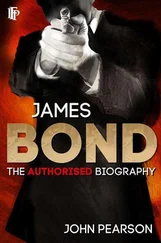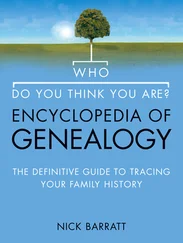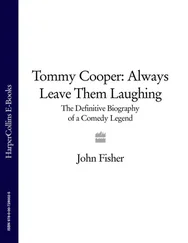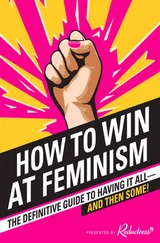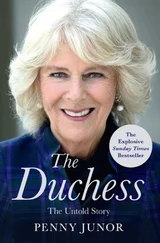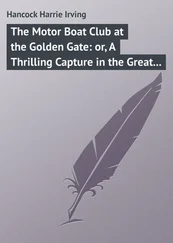We tend to place a burden on the object of our admiration that at times places honesty off limits. But the candour of Nathan’s text may have been self-defeating. In subsequent years the Hancock biographical record has not been helped by much that has been speculative and sensation-seeking. The doom and gloom of the final act of the story has always suggested a tragedy with few, if any, mitigating features, while in the years since his suicide in Australia in 1968 the myths have cohered and clung like barnacles to the hull of his reputation. It has therefore been rewarding to discover for much of the time a lighter, happier, even ordinary Hancock as the veils of my research have lifted; also a performer who managed to succeed for so long despite his innate insecurity, rather than someone who failed because of it. The alcoholic excess and its attendant troubles clouded only the last few years of a spectacular career, while, as Roger Wilmut, zealous chronicler of the Hancock career in all media, has pointed out, he was capable of giving fine stage performances far away in Melbourne as late as 1967. Forty years on he continues to stand tall as arguably the greatest British comedian of my lifetime. Certainly in terms of the broadcast media it is impossible to think of anyone who has subsequently surpassed his achievement. There was little that was funny about his insatiable desire for perfection and the self-doubt that came in its wake, but the sorrow at the end has to be balanced by the utter delight of a nation in his comic skills. As Denis Norden, the doyen of British comedy scriptwriters, has said, ‘For a comedian to leave behind that kind of echo of remembered laughter – it is hard to think of his life as a complete tragedy.’
Few comedians have affected the lives of their public in the way Hancock did. Even today it is impossible for a member of his audience to realise they have forgotten to cancel the newspapers while on holiday, to endure the agonies of the common cold, to be bored senseless on a Sunday afternoon, to get stuck in a lift, to donate blood, without enjoying again the bonus of the laughter he created when he found himself in those circumstances. In these contexts Norden’s phrase ‘echo of remembered laughter’ becomes especially relevant. Moreover even today the thought of what Hancock would have said or done in a particular situation provides a constant pick-me-up at moments of mounting frustration as bureaucracy and technology take more and more of a stranglehold on our lives. In this way he exercised – and continues to exercise – a strong emotional pull over his audience. It is the great paradox of his story that one to whom life became unbearable in its last few years should forty years after his death continue to make life bearable for others.
Chapter One TONY HANCOCK The Definitive Biography John Fisher
THE IMAGE OF HANCOCK TONY HANCOCK The Definitive Biography John Fisher
‘ I was always trying to make life a little less deadly than it really is. ’
Seldom has a comic persona played a more tantalising tug-of-war with the character of the individual behind the mask than in the case of Hancock. It was Denis Norden again who voiced the opinion that rather than write a succession of scripts for Hancock, Ray Galton and Alan Simpson found themselves writing a novel, so fully rounded was the character they refined and defined while writing in excess of 160 radio and television Half Hours over a period of seven momentous years. Even had they set out to think this way – which they didn’t – they could have had no idea they were inadvertently compiling a virtual biography of their colleague at the same time. Irrespective of the extent to which the world view, mind-set, spoken idiom of the Hancock character belonged to the performer in real life, it is remarkable to discover that so many of the pivotal aspects of the Hancock saga and mythology are foreshadowed in their words. While they obviously did not create the man with all his problems and complexities, many of which still had to reveal themselves after they parted company professionally, there was, as we shall discover, scarcely a twist or turn in Tony’s corkscrew of a career that wasn’t pre-empted with spectacular – albeit involuntary – prescience by Alan and Ray, and sometimes poignantly so.
All great comedians from Chaplin and Keaton to Cooper and Tati have understood the idea of personal branding. With Hancock the process evolved more gradually through his collaboration with two scriptwriters of brilliance, until the outer trappings of the character they created together proved too constricting to bear and he attempted to change direction, ultimately parting from them, having already revised his wardrobe and locale. Nevertheless their shared creation is how he is most fondly remembered, and his portrayal of it remains his greatest achievement. This is the Hancock of his BBC years, from the start of the classic series on radio in 1954 until the last modified episode on television in 1961. There was much else on the credit side, a dazzling amount, including his earlier radio work, two feature films, more television of variable but not entirely negative quality, and a stage repertoire upon the extent of which many a lesser talent has fashioned an entire career. But the BBC was where most would say he belonged. It has even been said that the institution has ended up more like him than its former self. ‘The BBC is the corporate equivalent of Tony Hancock,’ observed Jeff Randall, the financial journalist, in the Daily Telegraph recently. ‘Full of talent but riddled with self-doubt.’ In Hancock’s day Auntie certainly seemed more assured of her identity, in spite of – even because of – the burgeoning competition from the commercial television sector. There was then a creative climate in which all associated with Hancock drew strength.
Half a century after his heyday there can be no disputing the earlier dominance of the individual whose dodgy initial aspirate could be seen as the template for the television aerial fast becoming attached to every rooftop in the nation, the technological icon of a new age. Comparisons with his contemporaries in the broadcast media are as irrelevant as applying the process to Chaplin’s place in the history of the cinema. Hancock’s Half Hour remains both pioneer and benchmark when the British situation comedy is discussed. Hancock represents the archetypal British telly comedy character, his single surname carrying the totemic resonance of that show-business elite that includes not only the little tramp, but Garbo and Bogart and Sinatra too. To my knowledge no other performer has been featured as often as seven times on the front cover of the flagship listings magazine, the Radio Times , six times during his short career and once posthumously. A correspondent to the New Statesman a short while after his death said it all. Having mislaid his passport on his return from Geneva, the writer became ensnared in a dialogue with a testy immigration officer at Heathrow. ‘Where do you live, sir?’ asked the official. ‘Cheam.’ ‘And what does the name Hancock mean to you?’ ‘But that’s East Cheam,’ countered the traveller. ‘You can go through,’ came the response. ‘No one who knows that could be anything but British.’ All was right with the world again.
It is sometimes difficult to accept that the character moulded by Galton and Simpson for Hancock had its origins in radio. It seems to have been tucked away in the visual folk memory of the nation, sharing space with intrinsically British icons like Mr Pickwick and John Bull, for far longer. And yet only in 1956, by which time as a radio show Hancock’s Half Hour had been triumphant for three series, did it transfer to the television screen and the combined instinct of writers, producer, wardrobe mistress and star conjure up the grandiose Homburg hat and oppressive black coat with its astrakhan fur collar that defined the pretensions and pomposity of his character as securely as the frock coat, cigar and painted moustache had summed up Groucho’s aspirations to upward mobility for another era. Already Hancock the man and Hancock the entertainer shared the physique that epitomised the sagging melancholy that contributed to his comic tour de force . ‘I look like a bloody St Bernard up the mountain without a barrel’ was a line that would creep into his act. The hunched shoulders, crumpled clothes, deflated stance – like a punctured Michelin Man recast as a sorry failure for a scarecrow – all made their morose contribution to one of the symbolic figures of the twentieth century. Within a short while the image had resonance for radio listeners as well. In an episode where Hancock is courted by Madame Tussaud’s, the waxwork technician played by Warren Mitchell knows exactly the look he is after. With all good reason he sees the model in astrakhan collar and Homburg, spats and patent-leather shoes. Hancock protests that this is merely his ‘walking out gear’. He envisages his look-alike in a more casual, homely pose: ‘silk dressing gown, cigarette holder, Abyssinian slippers, Cossack pyjamas and a fez’. Curiously our preconception of the first makes the second image funnier, since everything you need to know about the man, the catalyst for the laughter, is contained in the basic brand.
Читать дальше

